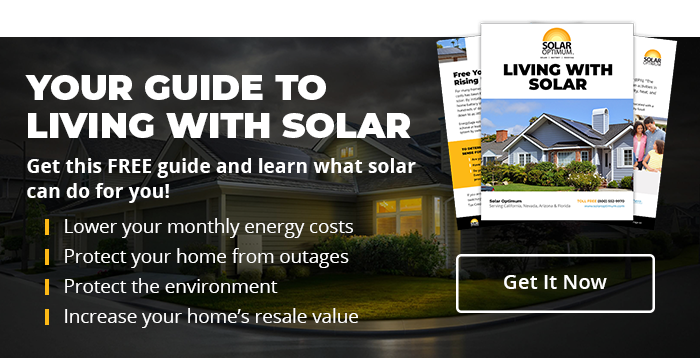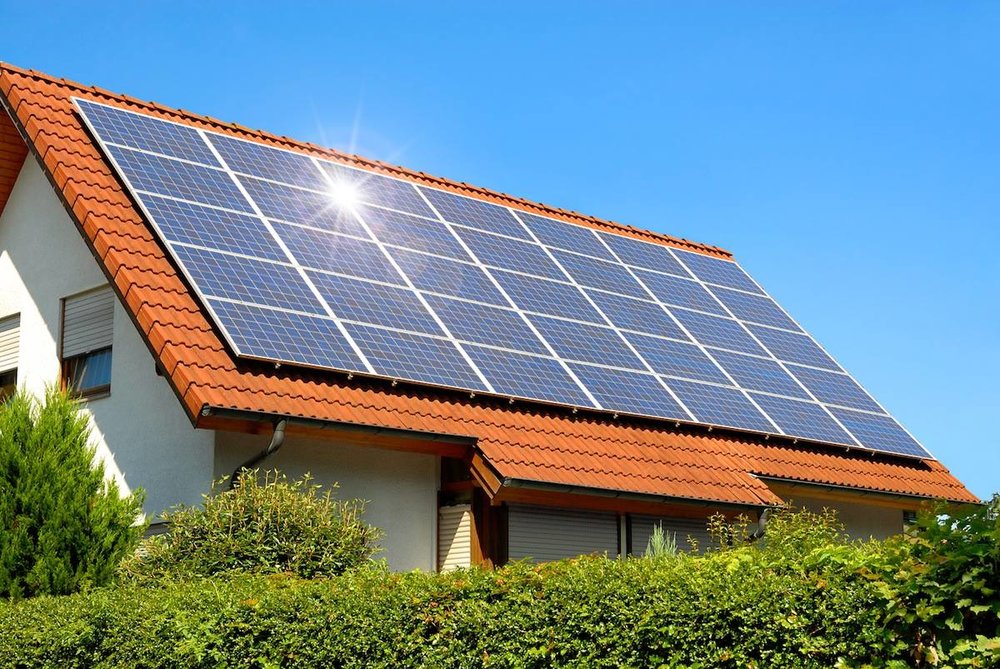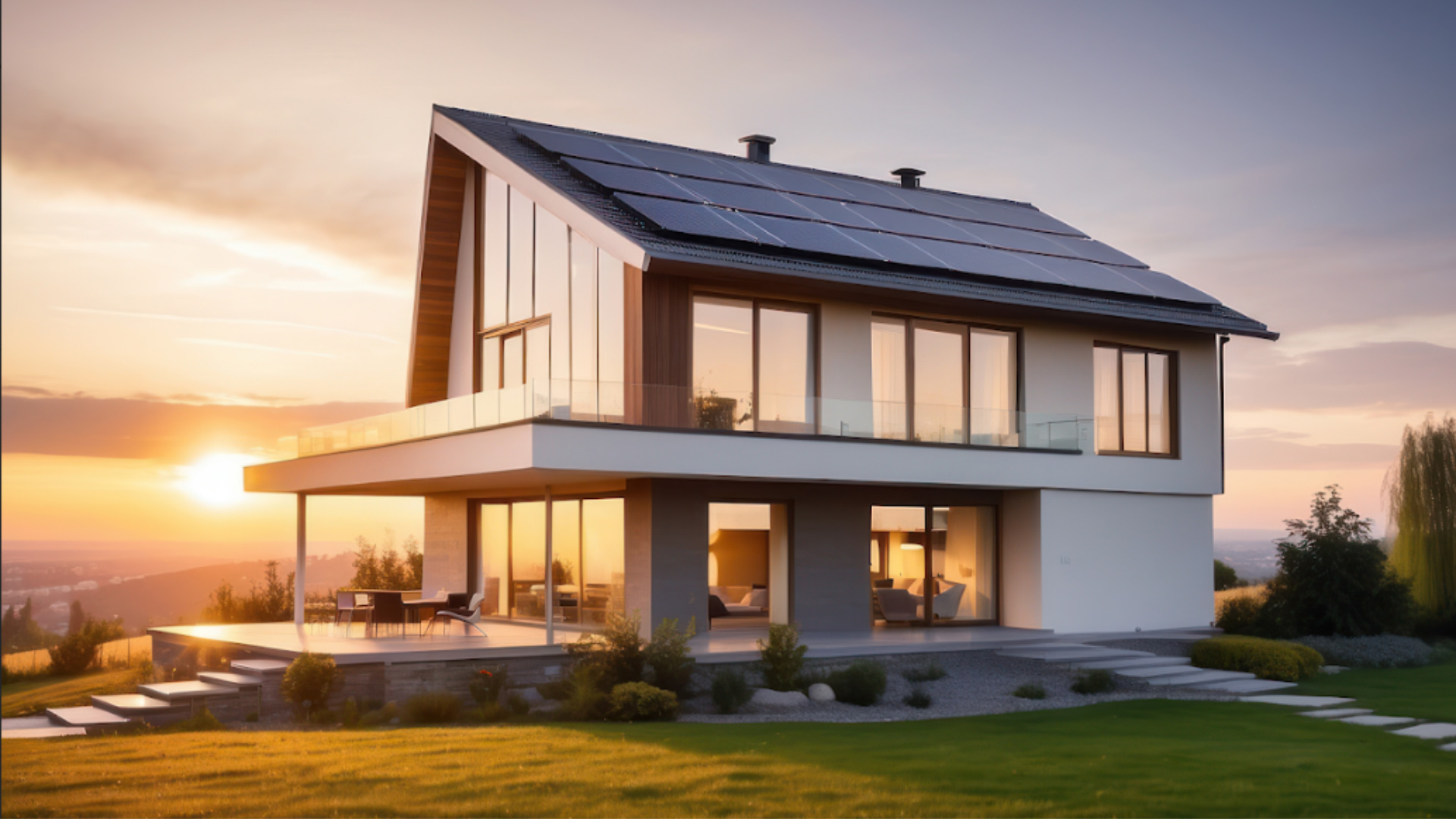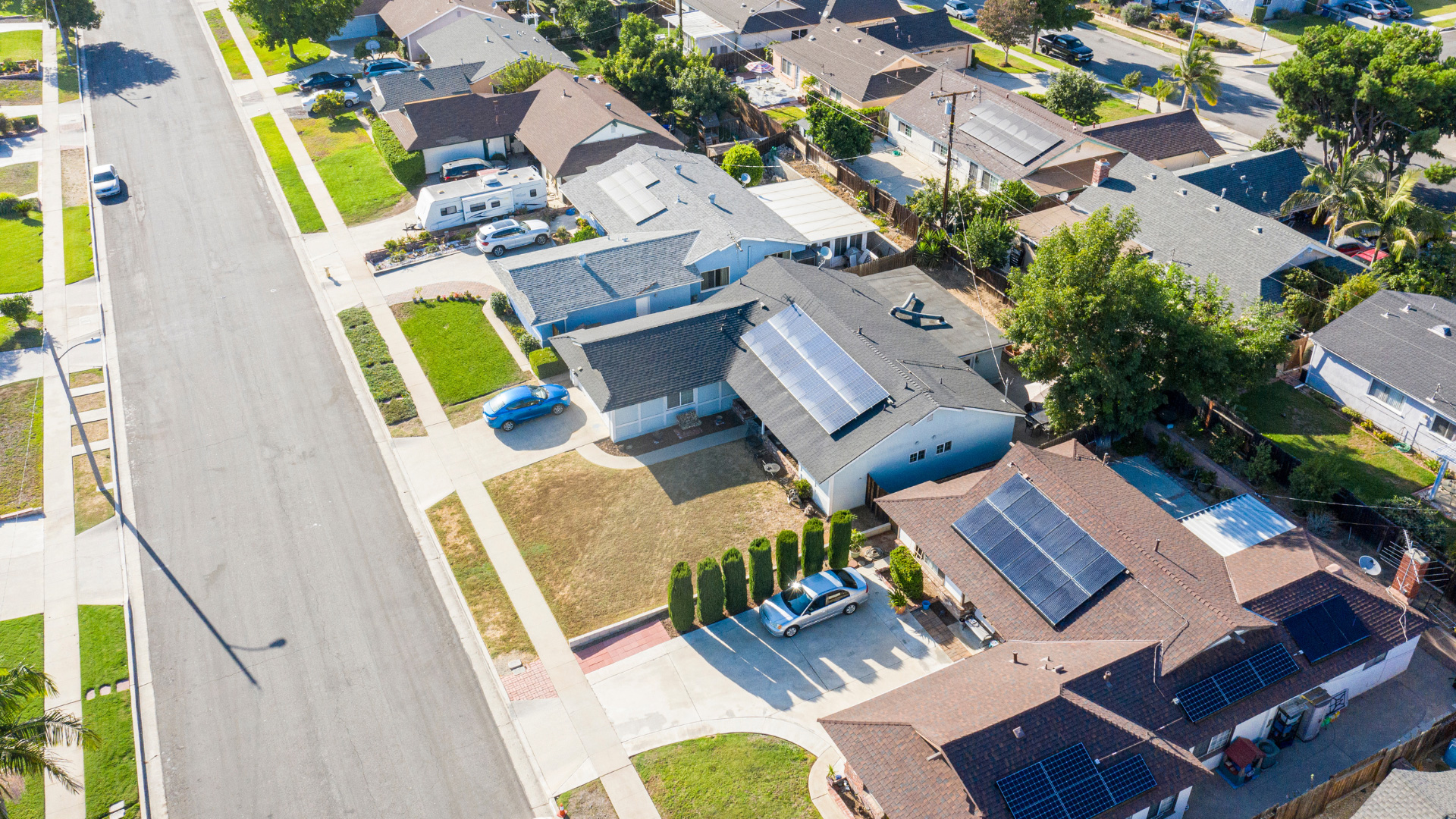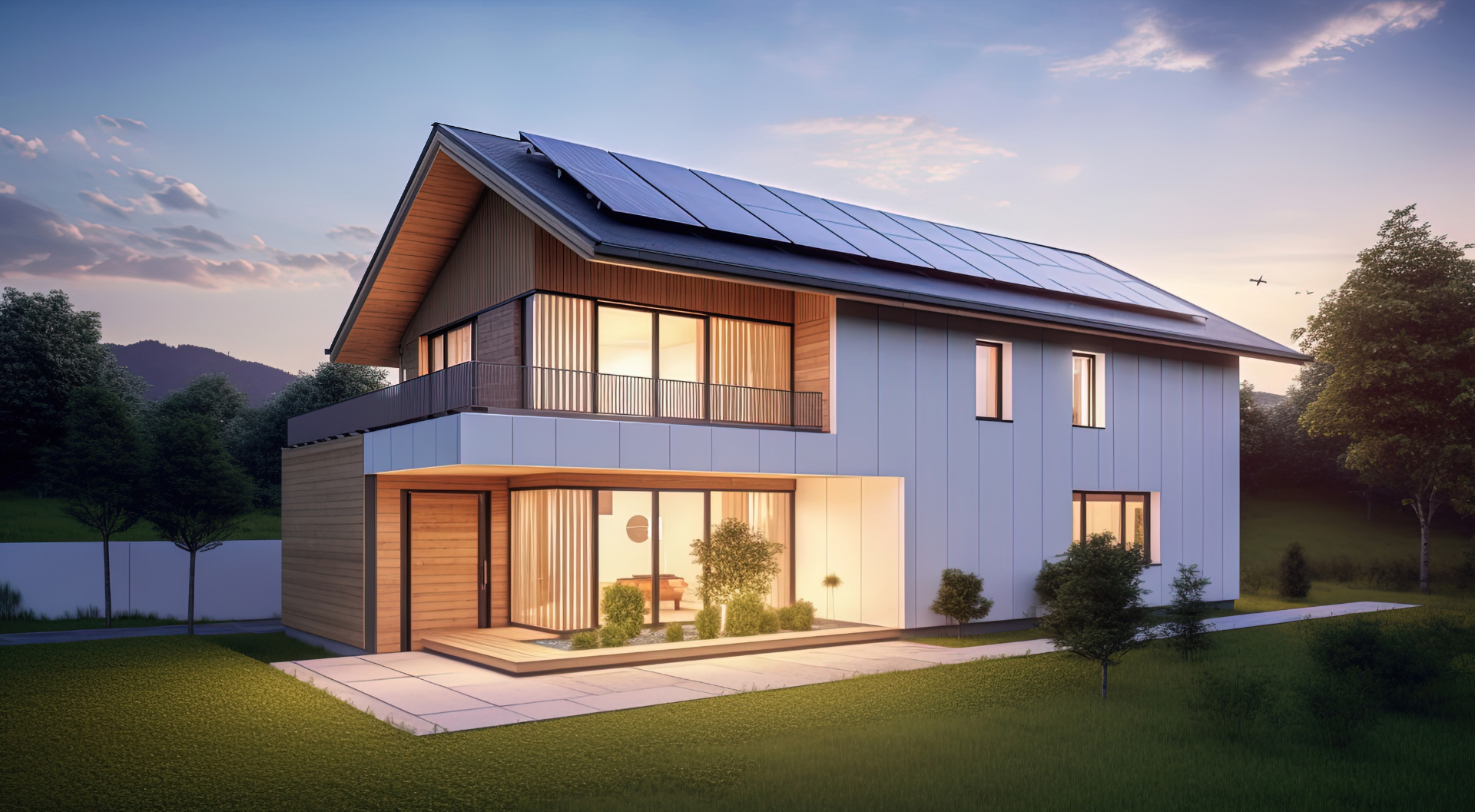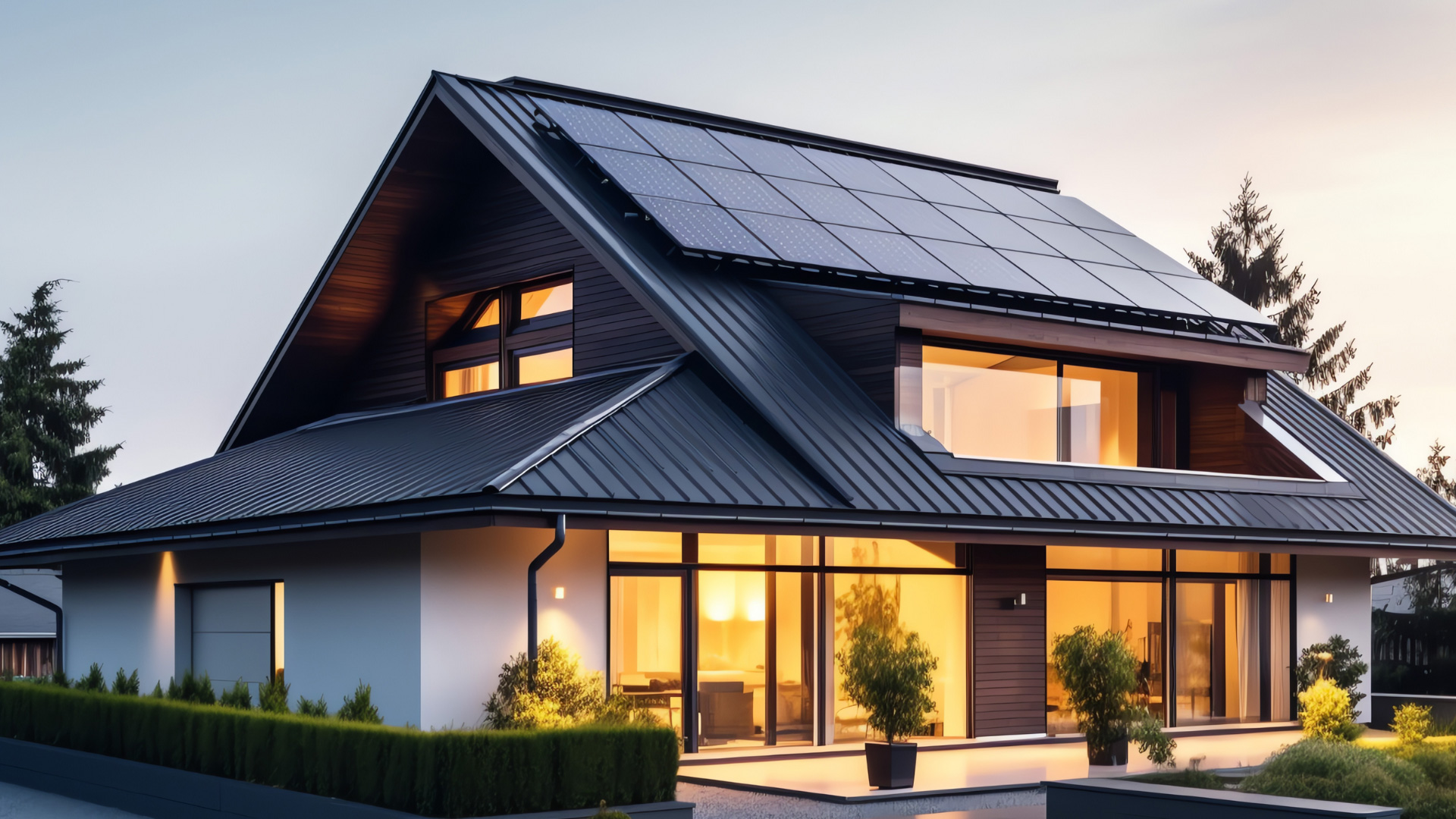A common question among homeowners exploring alternative energy sources is, how is solar energy used to power a home? The simple answer is that solar panels convert sunlight into electricity for immediate use at home or storage for later use.
Typically, the entire process of solar energy generation takes four steps:
- Solar panels produce DC power
- A solar inverter converts the power into usable AC electricity
- Solar inverter conveys power into a home
- The excess power is transferred to the grid
Continue reading to learn more about how solar energy is used to power a house.
How Solar Panels Produce DC Power
About 15 to 25 solar panels are installed on the roofs of residences with solar power systems. Each of the panels has about 60 or 72 photovoltaic cells, each made of poly-crystalline or monocrystalline silicon.
After capturing sunlight, the photovoltaic cells change it into direct current (DC) in a process known as the photovoltaic effect. This is where photons from the sun’s rays strike the semi-conductive area of the panel. They activate electrons, which detach from the silicon material and travel through the solar cells, along wires attached to the sides of the panels, and into a junction box. It then travels to an inverter for conversion.
The design of the specific solar panels in use and the strength of the prevailing sunlight determine the amount of solar electricity produced. Currently, one solar panel can produce up to 400 watts when the weather is favorable.
How a Solar Inverter Converts DC Power Into Usable AC Electricity
The DC power generated by solar panels is unusable in homes since most appliances require alternating current (AC). Thus, the DC power has to be converted to AC form before it is transferred into homes. A solar inverter handles the energy conversion.
There are two ways to install inverters:
- Module level. This is where small micro-inverters are affixed on each solar panel, and they handle the AC to DC conversion.
- Centrally. This procedure is also known as the string-to-string inverter. After installation, the central inverter receives power from all the solar panels before starting the conversion process. To improve performance and code compliance, small DC power optimizers can be affixed to each panel.
How an Inverter Conveys Power Into a Home
The inverter feeds the AC current into a home’s circuit board at the appropriate voltage (120V/240V). You can then connect your electrical appliances or use solar energy in other ways, such as lighting your home.
The most common form of solar installation done in residential properties is grid-tied. This implies that you can at any time use a combination of solar and grid power, or use either option individually. When your electric needs are greater than the power generated by the solar panels, your loads have to rely on a combination of both grid and solar energy.
Get Solar Energy For Your Home Today
How is solar energy used to power a home? The above process explains all about the generation of this green energy. Our solar experts can help you design a solar system that meets the custom energy needs of your home. Contact us today for a quote.
